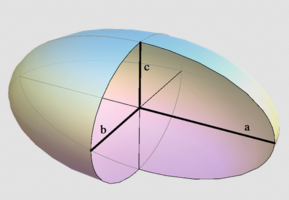Okay, not sure where to post this question - forgive me if it's in the wrong section. Also, I do not know calc or trig, so symbols from either will probably just confuse me more. This is not a school project, so there are no instructions to go with it, and asking this question on normal math help sites always gets the question rejected saying that they do not do homework... all that said, here's the question
I am trying to work out the formula for this problem...
I have an elongated sphere of clay, I cut that sphere in half... we have the height, base, and density of the clay, so in turn mass and volume can be derived
Now, I add clay to all sides equally, thus whatever amount I add should add 1/2 as much to the height as it does to the base... we have the mass that will be added, and the density is the same as the original clay... is there a formula that will tell me what the final height and base will be?
I didn't really give any numbers here because all of the numbers are variables
I hope the question made sense
I am trying to work out the formula for this problem...
I have an elongated sphere of clay, I cut that sphere in half... we have the height, base, and density of the clay, so in turn mass and volume can be derived
Now, I add clay to all sides equally, thus whatever amount I add should add 1/2 as much to the height as it does to the base... we have the mass that will be added, and the density is the same as the original clay... is there a formula that will tell me what the final height and base will be?
I didn't really give any numbers here because all of the numbers are variables
I hope the question made sense

